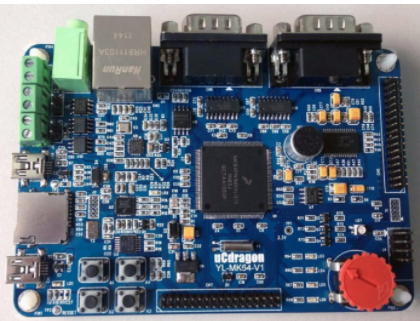The uneven printing of solder paste and the amount of solder paste will cause Manhattan (tombstone) phenomenon. Too little solder paste printing or patch offset can easily lead to poor PCB soldering. Excessive amount of solder paste causes the shape of the solder paste to collapse, and the solder paste that exceeds the pad will form tin beads during the melting process, which is easy to cause a short circuit. Oxidation of the surface of the component or the pad surface reduces the solderability, so that the solder and the component and the pad are poorly infiltrated and form a virtual solder. Avoid using components on the surface of the component or the circuit board pad to maintain good solderability.
The solder paste printing should be uniform, the solder paste should be the same size and shape as the pad, and aligned with the pad. The minimum amount of solder paste should cover more than 75% of the area of the pad, and the maximum coverage area of the excess solder paste should be less than 1.2 Times the pad area, prohibit contact with adjacent pads.
The quality problems caused by printing solder paste in the entire production account for a large proportion. The printing quality has a great relationship with the condition of the template, the squeegee of the solder paste equipment, operation and cleaning. To solve such problems, attention should be paid to the technical requirements of various aspects. Generally speaking, if you want to print high-quality solder paste printing, you must have:
1) Good and suitable solder paste.

2) Good and reasonable template.
3) Good equipment and scrapers.
4) Good cleaning methods and appropriate cleaning frequency.
3. Analysis of related causes of poor solder paste printing and treatment methods:
3.1, collapse
After printing, the solder paste collapses on both sides of the pad. The reasons may be:
1) The scraper pressure is too high.
2) The positioning of the printed board is unstable.
3) The solder paste viscosity or metal percentage is too low.
Prevention or solution:
Adjust the squeegee pressure; re-fix the printed board; choose a solder paste with a suitable viscosity.
3.2, the thickness of the solder paste exceeds the lower limit or the lower limit
The possible reasons are:
1) The thickness of the template does not meet the requirements (too thin).
2) The scraper pressure is too high.
3) The solder paste has poor fluidity.
Prevention or solution:
Choose the template with the right thickness; choose the solder paste with the right granularity and viscosity; adjust the pressure of the squeegee.
3.3 Inconsistent thickness
After printing, the thickness of the solder paste on the PCB pads is inconsistent. The possible causes are:
1) The template is not parallel to the printed board.
2) The solder paste is not uniformly stirred, resulting in inconsistent viscosity.
Prevention or solution:
Adjust the relative position of the template and the printing plate, and stir the solder paste before printing.
3.4. There are burrs on the edges and surfaces
The possible cause is that the viscosity of the solder paste is low, the template mesh hole wall is rough or the hole wall is stuck with solder paste. Prevention or solution:
Before the stencil is put into production, make sure to check the opening quality of the mesh, and pay attention to cleaning the stencil during the printing process.
3.5, uniform printing
Incomplete printing means that solder paste is not printed on part of the pad. The possible reasons are:
1) The mesh holes are blocked or part of the solder paste sticks to the bottom of the template.
2) The viscosity of the solder paste is too small.
3) There are larger metal powder particles in the solder paste.
4) The scraper is worn.
Prevention or solution: clean the mesh and the bottom of the template, choose a solder paste with a suitable viscosity, and make the solder paste printing can effectively cover the entire printing area, and choose a solder paste whose metal powder particle size corresponds to the window hole size.
3.6 Pointing
Sharpening refers to the small peak shape of the solder paste on the pad after missing printing. The possible causes are: the printing gap or the viscosity of the solder paste is too large, or the stencil and the circuit board are demolded (ie separated) too quickly. Prevention or solution: adjust the printing gap to zero or select a solder paste with a suitable viscosity to reduce the demolding speed.
3.7, deviation
Misalignment means that the printed solder paste deviates from the pad by a distance of 1/4 or more. The possible causes are:
1) The PCB circuit board is poorly positioned (the circuit board is off-positioned or not firmly positioned), and the position is offset during printing;
2) During printing, the positioning of the circuit board is uneven, and there is a gap between the circuit board and the steel mesh;
3) Misalignment of stencil and circuit board (semi-automatic printing machine);
4) When printing, there is a certain angle between the circuit board and the steel mesh;
5) Deformation of steel mesh;
6) The stencil opening and the circuit board are offset in different directions;
Prevention or solution:
Check whether the PCB circuit board positioning fixture is good, whether it is loose or shifted, whether the positioning PIN matches the circuit board; confirm whether the steel mesh and circuit board are completely aligned, whether there is an angle between the circuit board and the steel mesh, and Make corresponding adjustments; check whether the steel mesh is deformed, whether the openings of the steel mesh are offset from the circuit board pads in different directions, and it is confirmed that the steel mesh is bad, and report to the technical supervisor for confirmation.